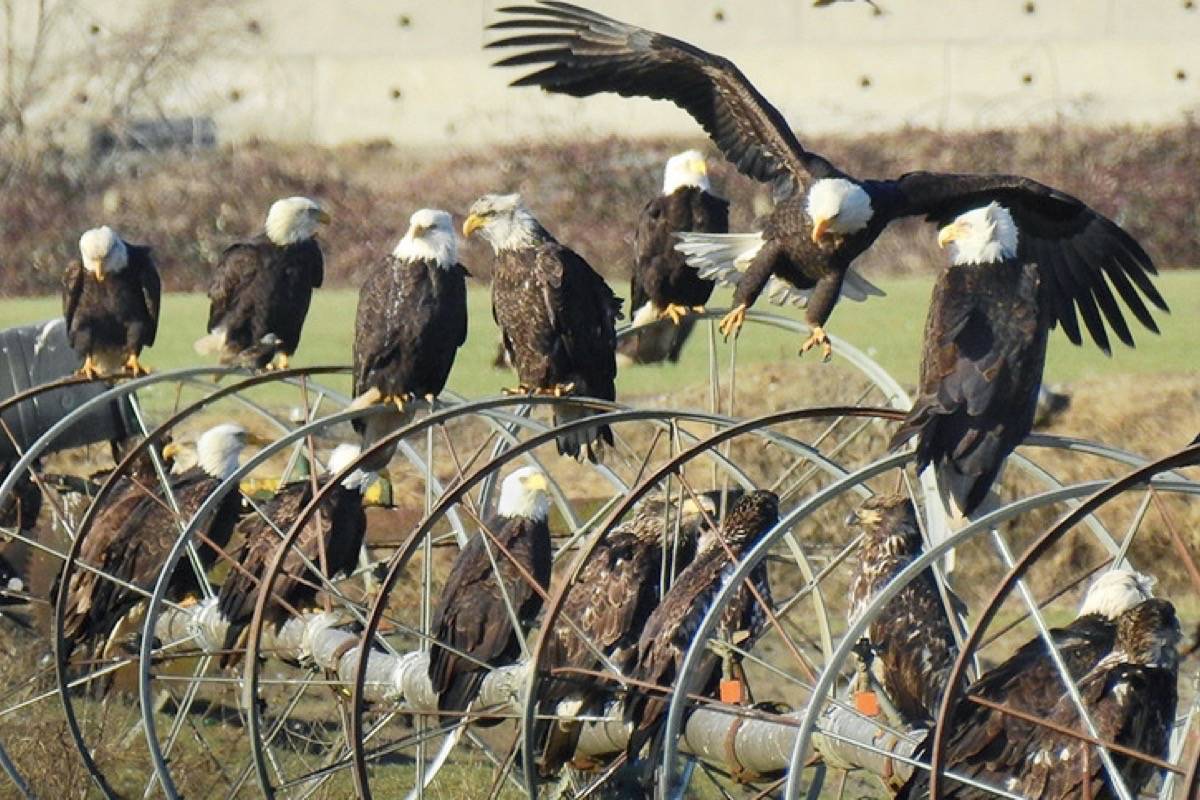Back in 1927, a huge fir tree on the J.T. Brown property in Colebrook was taken down.
It had an abandoned eagle’s nest in its crown, and there were fears about falling bark and sticks.
“When the tree was down, the sticks and litter from the immense old nest filled a wagon box. Another reminder of Surrey’s wilderness days was gone,” Fern Treleaven wrote in The Surrey Story, published in 1970.
The giant eagles’ nests are no longer a thing of the past. Today, there are more than 400 pairs nesting in Metro Vancouver and Fraser Valley. In 1953, when longtime eagle watcher and expert David Hancock first started counting nests from the air, he found only three active nests.
Hancock, a South Surrey resident, has for decades played an important role in raising awareness about eagles. He has published books, taken innumerable photos, conducted bird and nest counts, founded the Hancock Wildlife Foundation (www.hancockwildlife.org) and set up cameras to monitor activity and allow for public viewing.
The foundation’s latest project is to mount solar-powered tracking devices to monitor the eagles’ movement. As of early March, five tracking devices had been placed on eagles’ backs, and the foundation hopes to raise enough funds to place many more.
“We tracked one (eagle) four days ago,” Hancock told Peace Arch News on Feb. 28. “The first day it went out to Roberts Bank, the next day it went to the Mission landfill. The next day it went to the Harrison River and the last two days it’s been going north up the Fraser River. Yesterday it was just north of Boston Bar.”
Eagles are in abundance throughout this area. The best place to see them is near Boundary Bay and Burns Bog in Delta, where it is a rare day if a visitor doesn’t see a couple dozen eagles. There are at least 12 pairs nesting in South Surrey, with others nesting elsewhere in Surrey and Delta and farther up the valley.
Why did eagles all but disappear in the early-1900s, and why have they come back so strongly?
Hancock – noting the Lower Mainland is a popular nesting spot because of milder weather and an abundance of food – offers two important reasons.
One is that Alaska offered a bounty on eagles until 1953, paying $2 for each pair of eagle feet turned in. This was likely due to the fact that eagles feast on fish.
Hancock said that collecting this bounty often allowed fishers from Washington to “collect gas money” to pay for their trip to Alaska. When the bounty ended, that was one less pressure on the eagle population.
However, it took the publication of Rachel Carson’s book The Silent Spring in 1962 – which detailed how pesticides had dramatically affected the ability of raptors to reproduce – to really change public attitudes. Birds that had once been considered solely as predators started to be seen in a new light.
Eagles’ nests are no longer a reminder of wilderness days. They are a reminder that Metro Vancouver and Fraser Valley are once again important ecological destinations for these magnificent birds.
Frank Bucholtz writes Wednesdays for Peace Arch News, as well as at frankbucholtz.blogspot.ca.
frank.bucholtz@gmail.com

